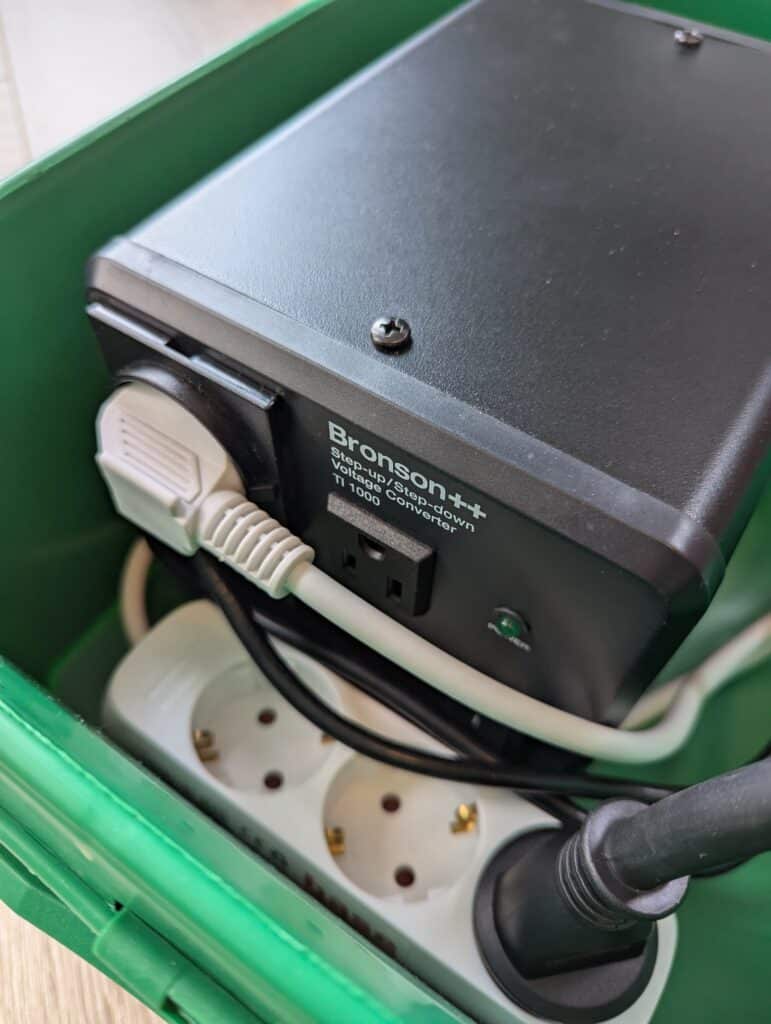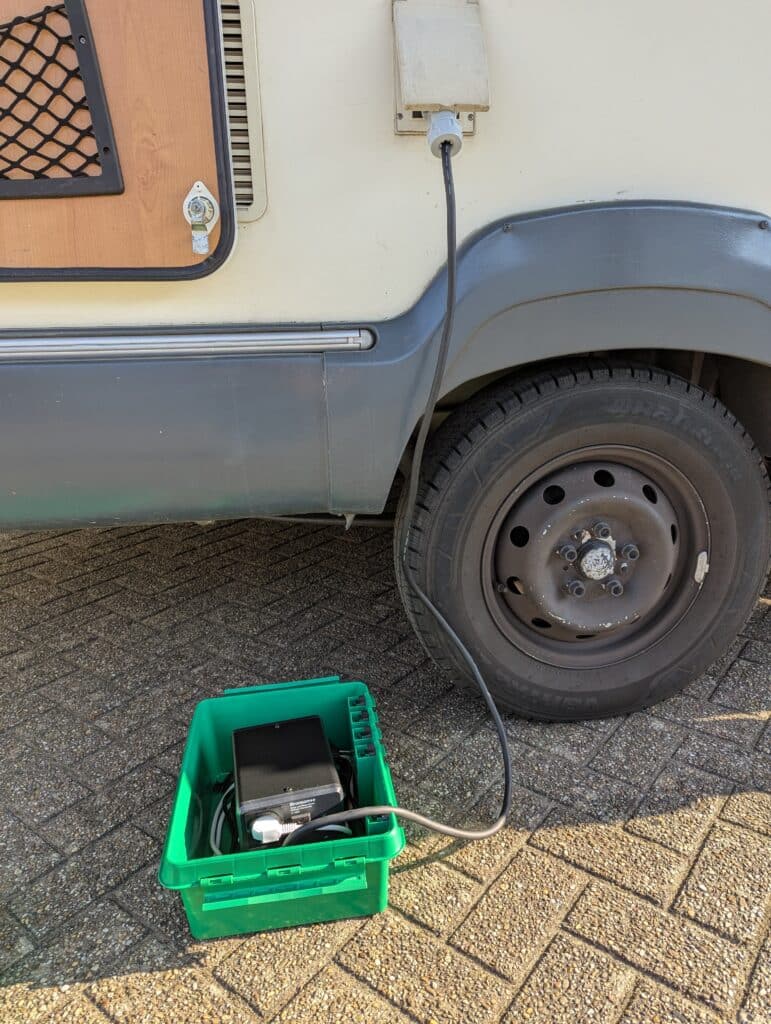Traveling to the U.S. with a European RV comes with unique challenges, especially when it comes to electrical compatibility. In Europe, RVs use a 230V power supply for hookups, while in the U.S., the standard voltage is 110V. Since we didn’t want to rely solely on our batteries and solar panels, we needed a solution to safely power our RV at American campgrounds. Here’s how we did it.
The Challenge: 230V RV in a 110V Country
Most campgrounds in the U.S. provide 15A, 30A or 50A electrical hookups, but they all deliver 110V power. Plugging a European RV directly into these hookups could damage appliances or fail to provide sufficient power. We needed a way to convert the electricity safely.
Our Power Conversion Setup
To ensure a smooth and reliable power connection, we put together the following setup:
- Voltage Converter: We purchased a high-quality converter that steps up 110V to 230V. This allows us to use all our European appliances as usual. Since we don’t have high power devices in our RV we bought a 1000 Watt converter of Bronson. It has a maximum capacity of 1000 Watt and a continuous working capacity of 800 Watt. Something to take into consideration when determining the needed capacity.
- 30A Circuit Breaker: This adds an extra layer of safety by protecting our RV’s electrical system from overload.
- 30A to 15A Power Extension Cord: This gives us flexibility in connecting to different power sources.
- 30A to 15A Power Adapter: Since some campgrounds only offer 15A connections, this adapter ensures we can still plug in.
The 30A circuit breaker plugs into the campground’s power post, the extension cord plugs into the circuit breaker leading to our converter, which then supplies 230V power to our RV’s electrical system. To make sure we can also connect to a 15A power outlet, we bought a 30A to 15A power adapter.
Since our trip hasn’t started yet and we decided to buy the power adapter, extension cord and circuit breaker in the US, these are the only photo’s we have.


Dealing with 60Hz Frequency
European appliances are designed for 50Hz, whereas U.S. power runs at 60Hz. Fortunately, most modern devices can handle this difference without any issues. We don’t have heavy-duty or frequency-sensitive equipment, so we don’t expect any further problems.
Final Thoughts
If you’re bringing a European RV to the U.S., planning your power setup in advance is crucial. A voltage converter, the right adapters, and a safety circuit breaker will help you connect safely at campgrounds and enjoy your travels worry-free.
We will update you about our setup a soon
